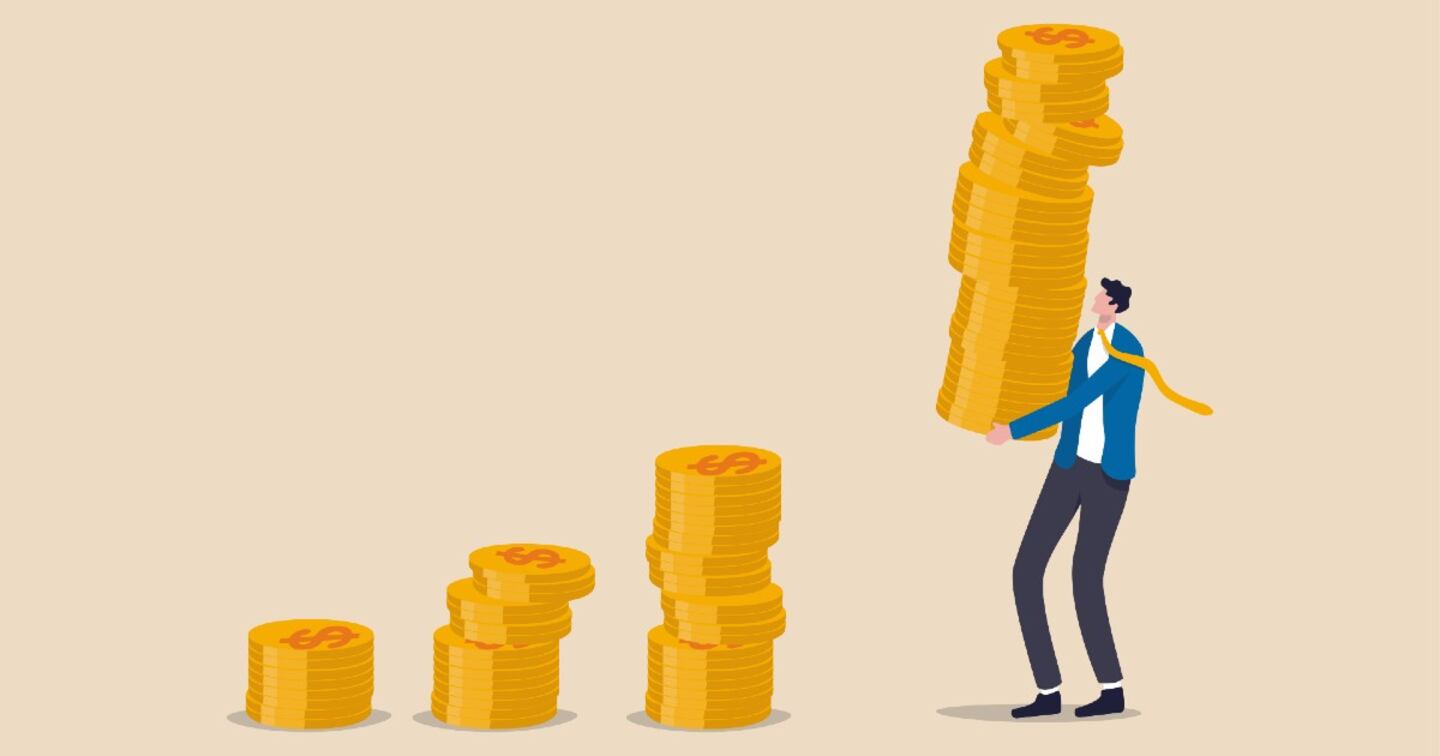We’re in the midst of a long stretch of historically low interest rates.
Getting much more than 0.50% APY in a high-interest savings account is a pipe dream these days, so people have turned to alternatives, including savings accounts that carry a lot of conditions, to get better interest rates.
Are these kinds of savings accounts worth it? And are there any other ways to get a better return on your liquid savings?
In this article, money expert Clark Howard explains whether these offers are a good idea.
Table of Contents
- High-Interest Savings Accounts With Conditions
- Clark: Conditional Savings Accounts OK for Some
- Evaluating High-Interest Savings Accounts
- Examples of High-Interest Savings Accounts With Conditions
- Alternative Solutions
High-Interest Savings Accounts With Conditions
My wife texted me recently after she saw a Facebook ad for a savings account offering 3% APY that’s sometimes “boosted up to 6%.” She was intrigued but suspicious and asked me to research it.
When I looked into the company, I found that it wasn't insured by the FDIC, recently had a data leak, takes 10 days to process transactions and had been accused of posting fake reviews to bolster its app rating.
It’s easy to understand why that ad may get a lot of clicks on social media in today’s interest rate desert. Especially during times of higher-than-usual inflation, parking your emergency fund in a low-interest savings account can feel counterintuitive.
Giving the company I mentioned any of my savings seems like a bad idea. But there are legitimate companies offering “strings attached” interest rates that are multiple times higher than you can find from the best high-yield online savings accounts.
Clark Howard: Conditional Savings Accounts OK for Some
According to Clark, many conditions-based high-interest savings accounts aren’t scams but require you to jump through plenty of hoops.
Some of the conditions you have to meet to achieve the outsized interest rates are acceptable. If you’re interested in any of these offers, read the fine print carefully.
For most people, it isn’t feasible to chase extraordinarily high interest rates on savings accounts that come with strings attached.
“The real issue with any of those that have the hoops you have to jump through is about the individual consumer,” Clark says. “They’re counting on the fact that most people will never do all the steps that it takes to get the deal.
“I know I’ll [personally] never get all those things done. They’re not sketchy, but they’re not practical for most people. So you have to know yourself.”
Evaluating High-Interest Savings Accounts
It’s important to check the fine print before jumping into a savings account deal.
In many cases, exceedingly good interest rates are “promotional” meaning that the company can lower the rates at any time. Promotional rates often are short-lived.
If you do open an account at a place offering a sweet deal, check the interest rate regularly so you’ll be aware if the terms of the deal change.
“They’re trying to attract a long-term customer with a short-term deal,” Clark says. “There’s nothing wrong with them if you are that person who will really stick to it and do those things. But if you’re not that person, which I know I’m not, it just wouldn’t happen.”
Here’s a checklist for the research you should do before hopping into one of these deal-making high-interest savings accounts:
- Make sure that the company is FDIC-insured.
- Check third-party review sites such as Trustpilot.
- Make sure there aren't any unnecessary fees.
- Check to see if the website and/or app are usable.
- Figure out what customer service is available (if any).
- Do simple searches on Google and Twitter to see if any reputable media outlets have written about the company and to see if you can find any authentic customer ratings and/or reviews.
Examples of High-Interest Savings Accounts With Conditions
The following list is not meant to be a complete chronicle of every current savings account offer above 0.50% APY.
However, looking through the details in this list can give you an idea of the types of conditions often associated with outsized interest rates.
It takes some digging to find all of the details on these types of accounts. They often do a good job of burying them behind an unmarked trail of links — typically starting in tiny print at the bottom of the website.
Digital Federal Credit Union: 6.17% APY
- 6.17% APY available on only the first $1,000
- 0.25% APY on any funds beyond the first $1,000
- $5 minimum balance required
If you or someone in your family is just getting started as a saver and has a limited amount to put aside, this can be a great option. Clark is a big fan of credit unions in general. But once you reach $1,000 in savings, you'll be able to get a better interest rate elsewhere.
HMBradley: 3.50% APY
- Special interest rate requires qualifying direct deposit each month
- Must save at least 20% per quarter for Tier 1 rate (3% APY)
- Gain additional 0.50% APY by spending at least $100 on HMBradley credit card each billing period and by making $2,500+ in monthly direct deposits each quarter
- No interest on balances above $10,000
If you're building an emergency fund, you have access to direct deposit through your job and you can save at least 20% of what you get paid, it may be worth considering HMBradley. You'll get 3% APY while keeping your emergency fund liquid.
Porte Banking: 3% APY
- Must set up monthly direct deposit of at least $1,000
- 3.00% APY only available on the first $15,000
- 0.50% APY on any funds beyond the first $15,000
- According to Porte Banking, "… transaction fees could reduce the interest earned. …"
If you're building an emergency fund and don't want to worry about saving a certain percentage of your direct deposits (as with HMBradley), Porte Banking could help you achieve 3% APY. Just make sure you review the transaction fees, which seem somewhat hidden.
Liberty Savings Bank: 1% APY
- Offered 3% APY less than a year ago
- 1% APY available on only the first $25,000 in checking and first $50,000 in savings
- 0.50% APY on any funds beyond the first $25,000 (checking) or $50,000 (savings)
- 0.05% APY on all funds if stipulations aren't met
- Must be enrolled in eStatements
- Must complete 12 debit card transactions each monthly statement
- Two checking options (one with a $4 monthly fee)
Clark strongly discourages debit card transactions. It appears that you'll get hit with $48 in annual fees if you sign up for the wrong version of the checking account. It's worth noting that the bank recently moved its promotional rate from 3% APY to 1% APY in just a matter of months, which can happen with any of these options.
SmartyPig: 0.70% APY
- 0.70% APY available on only the first $10,000
- 0.45% APY on any funds beyond the first $10,000
- No checking account option
- Must use outside funding source
SmartyPig's interest rate on the first $10,000 is about 0.2% to 0.3% more than the best high-yield online savings accounts. At $10,000, 0.3% is a difference of $30 per year. So we're talking a tiny amount. SmartyPig is marketed around savings goals. If you need a push in that direction, parking your money here may be good for you. Otherwise, it may not be worth taking the time to set up and keep track of a SmartyPig account.
Fitness Bank: 0.65% APY
- APY based on monthly steps tracked by Garmin, Fitbit, Apple Health or Google Fit
- 0.65% APY requires 12,500+ steps (10,000+ for age 65+)
- $100 minimum deposit
- $10 maintainence fee waived by maintaining $100+ average daily balance
If you want a financial incentive to exercise, Fitness Bank is an option. The additional 0.15% to 0.25% APY you’ll make above the best high-yield online savings accounts isn’t going to do that much on smaller balances. And if you don’t meet the step goal, your APY will shrink.
Alternative Solutions
If you’re looking for a way to make money on your savings and you don’t want to jump through hoops, there are other options:
- No-stipulation high-interest savings accounts: There are some stipulation-free savings accounts currently paying as much as 0.50% APY. In some cases, these rates change even more often than the "with strings attached" offers. If you have $25,000 in savings, at 0.50% APY, you're earning $125 per year in interest before taxes. It's a small amount, but your money will stay liquid and safe at an FDIC-insured bank.
- Certificates of Deposit (CDs): You'll need to leave your money in the account for a set time period, or you'll face penalties. This makes CDs an imperfect choice for emergency funds. But you may be able to get a higher interest rate than you'd earn from a savings account.
- Money Market Accounts: A cross between a checking and savings account, they come with checkbooks and debit cards and often require you to maintain a minimum balance. You may be able to get a higher interest rate than you'd earn from a savings account.
- Short-term bond index funds: If you're worried about inflation eating away at the purchasing power of your savings, Clark says it's worth considering short-term bond index funds. Unlike the other options on this list, short-term bond index funds are an investment — albeit an extremely low-risk one. They're also less liquid. But Clark himself has used this strategy while savings accounts are paying painfully low interest. The Vanguard option Clark recommends has returned 1.16% annually in the last 10 years after taxes and fees.
Final Thoughts
As the saying goes, if it’s too good to be true, it probably is. Or perhaps more accurately, in this case, the devil is in the details. Depending on your circumstances, you may be able to find a high-interest savings account (or more than one) that offers a good promotional rate. Just be aware of all the stipulations as well as your own willingness to meet them on an ongoing basis.
More Clark.com Content You May Like:
- 6 of the Best High-Yield Online Savings Accounts in 2021
- Best Online Banks: Free Checking and High-Interest Savings Accounts
- Emergency Fund Complete Guide: How Much & Where
- How To Save and Invest the Clark Howard Way
The post High-Interest Savings Accounts With Conditions: Are They Worth It? appeared first on Clark Howard.





